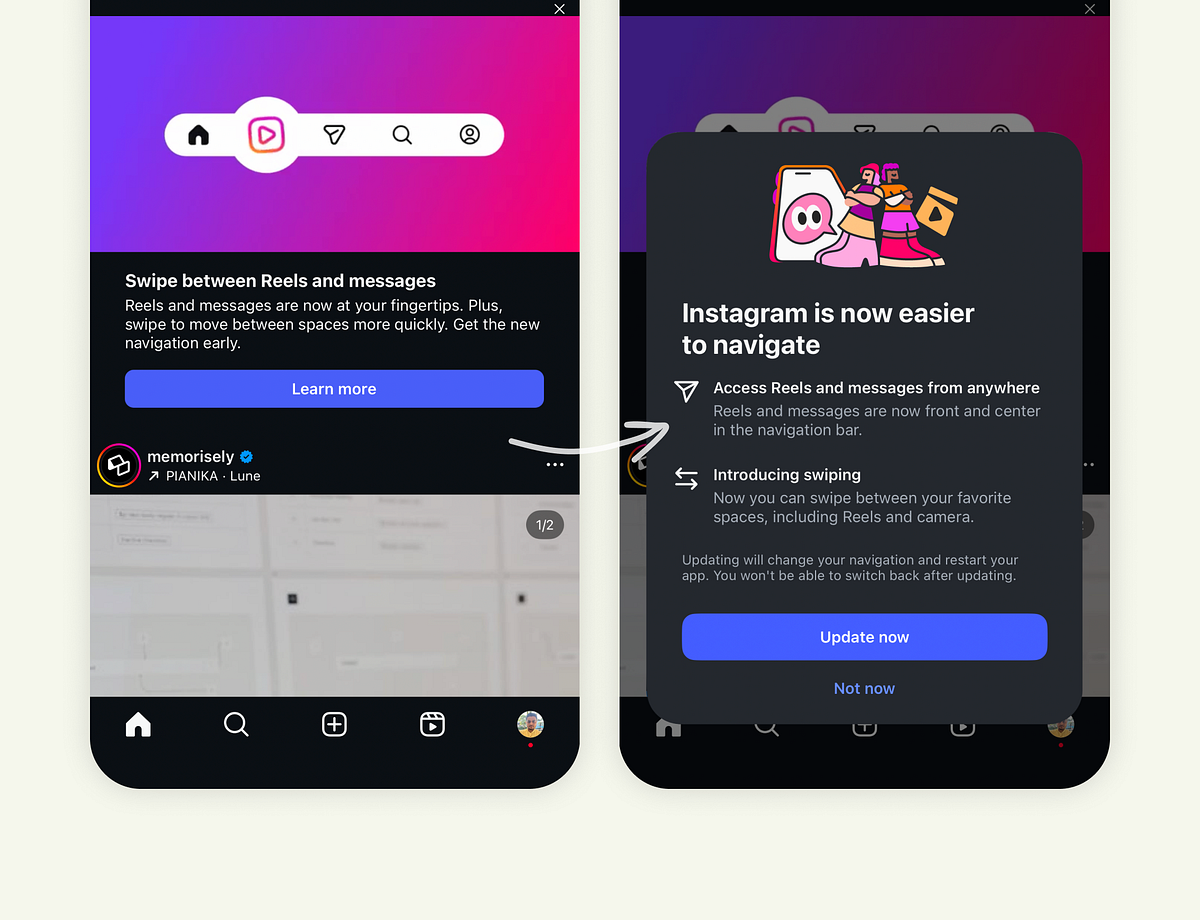
"They Informed Users First Before changing anything, Instagram showed an announcement right inside the feed. "Swipe between Reels and messages." The banner explained the upcoming navigation update with a short sentence, a clean visual, and a "Learn more" button. It didn't interrupt your session. It didn't feel forced. It invited curiosity. That alone is a big shift in mindset, from forcing change to introducing change."
"Once you tap "Learn more," you're shown exactly what's going to happen next. It's clear, visual, and to the point. Then comes the real UX gem - the choice. Two buttons: "Update now" or "Not now." That moment of choice matters. It gives users a sense of control and reduces the psychological resistance that usually comes with UI changes. People don't hate new designs; they hate feeling blindsided by them."
Instagram previously applied interface updates without notice, rearranging navigation and disrupting users' muscle memory, which provoked backlash. The recent navigation redesign began with an in-feed announcement that explained the change succinctly and included a 'Learn more' button. Tapping 'Learn more' presented a clear overlay describing what would change — Reels and messages moved front and center — and why the change improved speed and swipe navigation. Users were given a choice via 'Update now' or 'Not now,' granting control and reducing resistance. After opting in, a brief onboarding overlay explained how to use the new navigation. The approach preserved user trust and minimized frustration.
Read at Medium
Unable to calculate read time
Collection
[
|
...
]